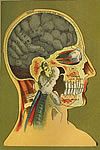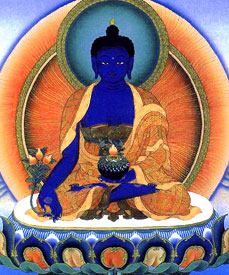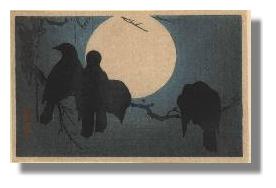Dr. Trogawa Rinpoche
Diabetes
Let us look at the cause of diabetes according to the Tibetan medical sources.
We will therefore need to discuss digestion more closely. There are two
types. It is necessary to understand perception of taste that determines
the process of digestion. Sweet foods are digested just as they are and
remain sweet after having been consumed. Salty foods, on the other hand,
turn sweet after having been consumed.
During the initial stage of digestion, phlegm breaks down what has
been consumed into many parts in the stomach. For this to occur, bile as
well as the wind of fire must be balanced in the stomach. If any of these
three factors are missing, food cannot be separated and coagulated properly.
This process always involves the taste perception of sweet since the characteristic
of phlegm is sweetness. It is the moment diabetes can set in.
Digestion involves three physical organs: the diaphragm, pancreas,
and spleen. An insufficient stomach digestion of food leads to a constant
excess of sweet gastric juice in the body; in which case only a little
will be expelled properly. The sweet gastric juice that has not been expelled
- let us call it “sugar” – flows into the intestines. Since sugar is a
water-soluble, it flows into the kidneys and bladder and is expelled from
the body naturally. There is an excess of sugar in the kidneys and in the
bladder in diabetics if healthy digestion falters. What happened? What
follows? We saw the first steps and now will look at what can go wrong.
Let us recall the three factors of wind, phlegm, and bile, the three
states that result from them, and all combined, which makes seven fundamental
characteristics that digestion must entail to be complete. When one or
a few are not balanced, then a disorder arises, which is a disturbance.
It is also important to check whether a parasite or an infection has caused
a disturbance that brings on sickness and disease.
Diabetes is a disturbance that sinks down in the body, so at first
patients complain about feeling uncomfortable in the lower part of their
body. During the second phase, the body reacts with digestive heat, which
Tibetan sources define as an increase of bile. Excessive sugar is produced
at this stage, that is retained in the kidneys and then flows into the
liver. Sugar then enters the blood stream and blood sugar is the result.
Diabetes was never thought of as a disease in the Tibetan tradition,
but since it is so predominant in the West we looked through our ancient
medical texts and found the following: In the section dealing with diseases
of impure blood, a slight reference is made to what sounds like diabetes.
Assuming that excess sugar mixes with bile, then it is a case of gallic
diabetes, which rises in the body because heat has the tendency to rise.
Another situation that occurs is dispersal, which sets in through excessive
phlegm in the stomach and decreasing wind and bile. The body reacts by
dispersing the phlegm, which flows into the joints. As a result, they swell.
This form of rheumatism is called “sallow arthritis.” Excessive phlegm
also causes asthma, which usually arises due to the flaring and dispersing
nature of phlegm.
Returning to diabetes, the next stage can vary immensely. When diabetes
sinks into the kidneys, they become cold and cannot function properly,
in turn disturbing the circulatory system. A chain reaction sets in, referred
to as “cold blood” in Tibetan medicine. Cold blood can easily be detected
in a urine test and through pulse diagnosis. If wind and phlegm simultaneously
occur in the kidneys, then wind will dominate since phlegm stimulates wind.
The diagnosis is then called “cold wind in the kidneys.”
Generally, excessive acrid or pungent-tasting food harms the eyes.
Someone who eats too much pungent food for a long time will eventually
have a burning feeling around the stomach, often diagnosed as an ulcer.
In this case it is important to know that sweet can turn sour.
Student: Which foods are harmful for patients afflicted with diabetes?
Rinpoche: Sweets of every kind, which includes potatoes, sweet potatoes,
roasted food, Tibetan tsampa, roasted wheat or corn, and popcorn are detrimental
for diabetics. Tibetan doctors also tell their patients not to consume
white rice. Anyone with only a tendency to develop diabetes may have brown
rice cooked in lots of water, though. Cooked corn on the cob is very good
for those suffering under diabetes. What do Western doctors say?
Student: I can’t say much about corn, but we recommend that our
patients reserve one day for rice only, and usually it is a day of white
rice.
Rinpoche: Is there a difference between the rice and corn in
the East and West?
Student: European corn is much sweeter. Rice is mainly recommended
for overweight patients because it flushes out deposits, so it seems to
be a general point of view.
Rinpoche: Diabetics should not be too active nor too lazy. Those
suffering from weak kidneys should not stand or may not sit too long at
a stretch. They may not be pushed around when under stress.
Question: You said that diabetics should not be overactive. Western
doctors suggest that diabetics should take a long walk after each meal
and exercise regularly. It has been proved that they need less insulin
if they do. Furthermore, they should have smaller meals more often each
day. Would you comment on that?
Rinpoche: Yes, that is my opinion too. I also tell my diabetics
patients to have many small meals stretched over the day. Physical exercise
after a meal reduces the production of phlegm and therefore of sugar, the
reason why patients need less insulin if they exercise after meals. I think
a good walk after each meal will do.
Question: Tibetan medicine does not prescribe insulin. How
would a Tibetan doctor treat a diabetics patient who, according to Western
interpretation, would die without insulin?
Rinpoche: We prescribe very strong medication that must be taken
very often and at regular intervals during the day.
Question: Do diabetics who have been sick for a long time develop
neuropathy that starts with a prickling feeling and numbness in fingers
and toes and ends in extreme pain? Does the disease impair eyesight and
eventually lead to blindness?
Rinpoche: I have noticed that patients afflicted by diabetes
for a long time do go blind. According to the Tibetan medical sources,
this type of blindness arises from excessive phlegm that slowly spreads
into the eyes.
All neurological disorders are treated separately in the Tibetan tradition.
Neurological injuries that are born from cold can have something to do
with diabetes. A patient first has to have suffered the cold form of diabetes
before his or her nerves are damaged and eventually destroyed.
Nyen Diseases in Tibetan Medicine,
Dr. Trogawa
Causes of Mental
Disorders According to the Tibetan Medical Tradition, Dr. Trogawa

Sleep and the Inner Landscape,
An Interview about
Dreams and Tibetan Medicine with
the Tibetan Physician, Dr. Yeshe
Dhonden
An
Interview with Eliot Tokar regarding his studies with Dr. Trogawa, Dr.
Dhonden and others (pdf)
Transformation
and Balance:
The
Principles of Tibetan Medicine in the Context of American Healthcare, Eliot
Tokar (pdf)
Preservation
and Progress: Using Tibetan Medicine as a Model
to
Define a Progressive Role for Traditional Asian Medicine in Modern Healthcare
Eliot Tokar (pdf)
Pictures from Tibet and Ladakh Circa
1986
Dr. Trogawa-Memorial
Blog

The Household
Physician

Medicine Buddha holding myrobalan

"Tibetan incense, medicinal powder, and
Tibetan 'precious pills' are in
great demand here," said one police officer who asked not to be
named.
"People believe that it can prevent the virus. And SARS hasn't spread
to Tibet."
Radio Free Asia-May 7, 2003



Handbook of Traditional Tibetan Drugs:
Their
Nomenclature,Composition, Use and Dosage



1912 Tibet Stamp Sheet Originals
From Which Our Reprints Have Been Made
____________________________________

The Household
Physician
Back to JCROWS.com






